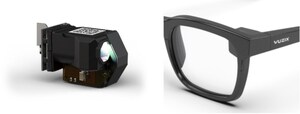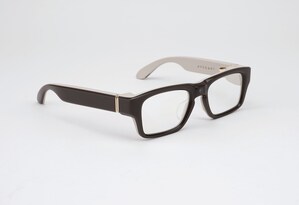Avegant Introduces Light Field Technology for Mixed Reality
New Mixed Reality Platform Enables Crystal Clear Close-Up Experiences With Virtual Objects
BELMONT, Calif., March 15, 2017 /PRNewswire/ -- Avegant Corp. ("Avegant") today announced the introduction of its patent-pending Light Field Technology for head-mounted displays, enabling up close and personal interaction with stunningly vivid virtual objects. Opening up a universe of interactivity within arm's reach, Avegant Light Field Technology solves one of mixed reality's greatest challenges: Enabling virtual objects to appear real at distances both near and far.
Avegant Light Field Technology enables the visualization of objects at multiple focal planes for augmented and mixed reality applications across a wide spectrum of professional and personal uses. Leveraging insight gained from researching, designing and developing head-mounted displays, Avegant Light Field Technology delivers ultra-high quality, detailed virtual objects that appear to be right at your fingertips, resulting in a more realistic and interactive experience.
With a deep scientific understanding of human sight and head-mounted display ergonomics, Avegant engineers designed its Light Field Technology to enable developers to readily bring virtual objects to life across major hardware and software platforms, using familiar tools and content, such as Unity.
"It's not often you witness a technology that could disrupt an entire industry," said Jeremy Bailenson, founding director of Stanford University's Virtual Human Interaction Lab. "Avegant Light Field is that kind of a breakthrough. I had long heard about the possibility of seeing close fields and far fields in the same scene, but experiencing it firsthand was believing. This is how the visual system was designed to work."
"Mixed reality will change the way we teach, learn, work and play," said Joerg Tewes, CEO of Avegant. "Avegant created the first complete mixed reality solution for hardware and software developers to create sharp, brilliant virtual objects within arm's reach."
"Applied Ventures invested in Avegant because we believe in their compelling vision of Light Field Technology," said Dr. Om Nalamasu, President of Applied Ventures and Chief Technology Officer of Applied Materials. "We look forward to seeing its disruptive potential to benefit mixed reality applications."
Avegant Light Field Technology stems from the development of the company's flagship high-definition Glyph personal theater, which delivers high-resolution, bright and vivid colors on a pixel-free display to maximize the viewing experience while avoiding eye strain.
"At Avegant we are reimagining screens," said Edward Tang, Co-Founder and CTO at Avegant. "The biggest stumbling block for mixed reality today is creating crystal clear images that are within one meter. Without this capability, most mixed reality use cases simply can't materialize. We've overcome that obstacle, and can't wait for people to experience the results."
About Avegant Light Field Technology
- Virtual Image Clarity: Enables sharp, brilliant virtual objects both near and far for use in consumer, industrial and commercial mixed reality applications
- Simple Software Development: Use familiar tools, including Unity, to easily create virtual images and bring them to life in mixed reality
- Easy Hardware Integration: Designed for use across major hardware platforms for quick product integration and time to market
About Avegant
Avegant is a technology company reimagining screens. The company uses its deep scientific understanding of human sight and head-mounted display ergonomics to reinvent the displays used in everyday life. Avegant's flagship product, the Glyph, is the world's first vivid reality near-eye display. For more information visit avegant.com or follow Avegant on Facebook, Instagram and Twitter.
Media Contact:
Gary Bird
FortyThree, Inc.
831.401.3175
[email protected]
SOURCE Avegant Corp.
Related Links
WANT YOUR COMPANY'S NEWS FEATURED ON PRNEWSWIRE.COM?
Newsrooms &
Influencers
Digital Media
Outlets
Journalists
Opted In





Share this article